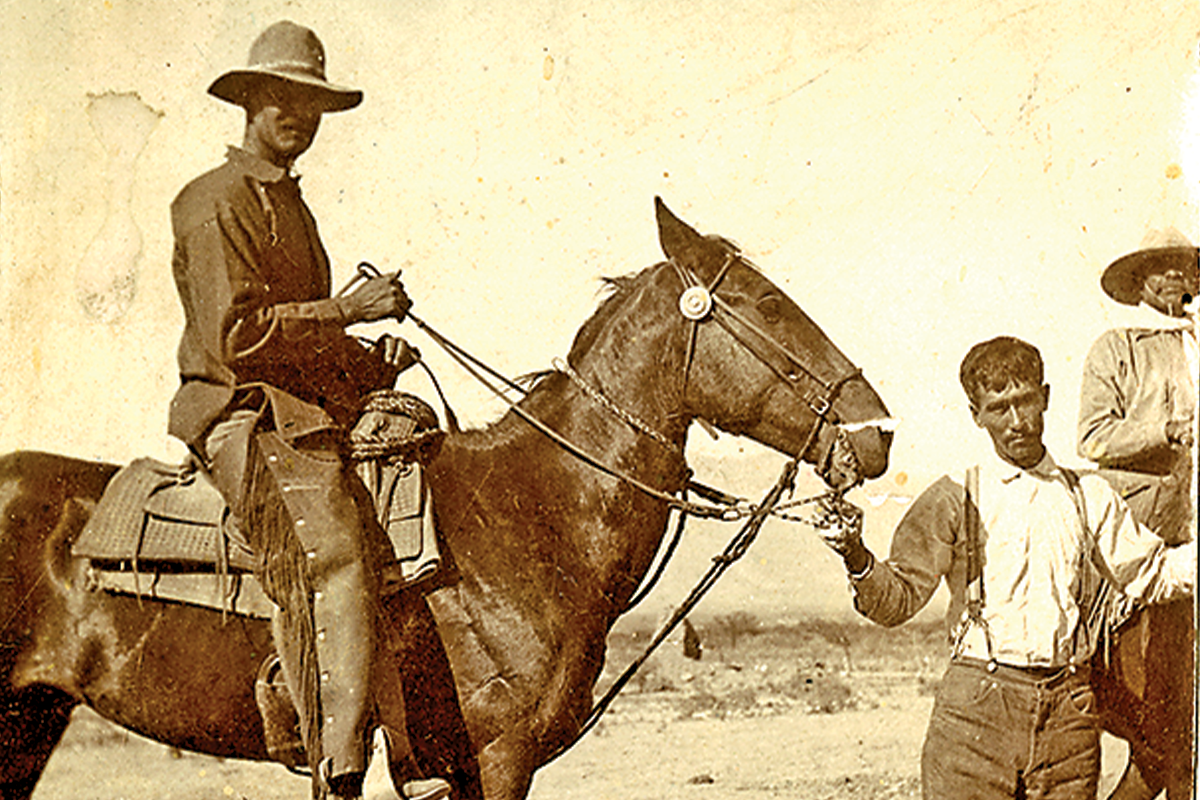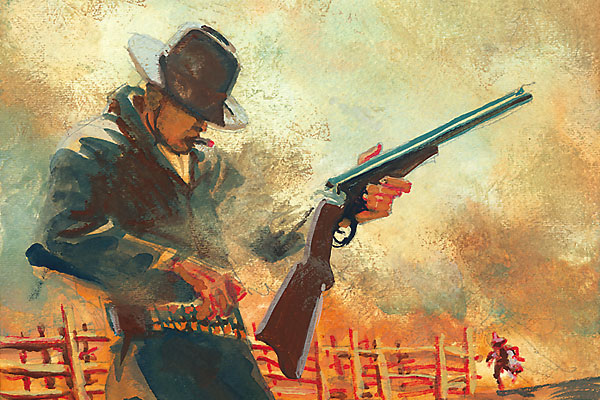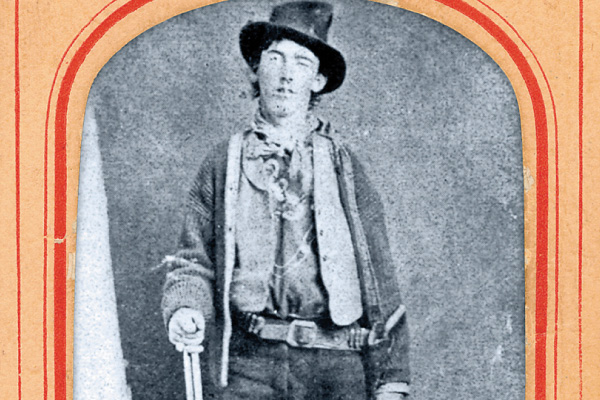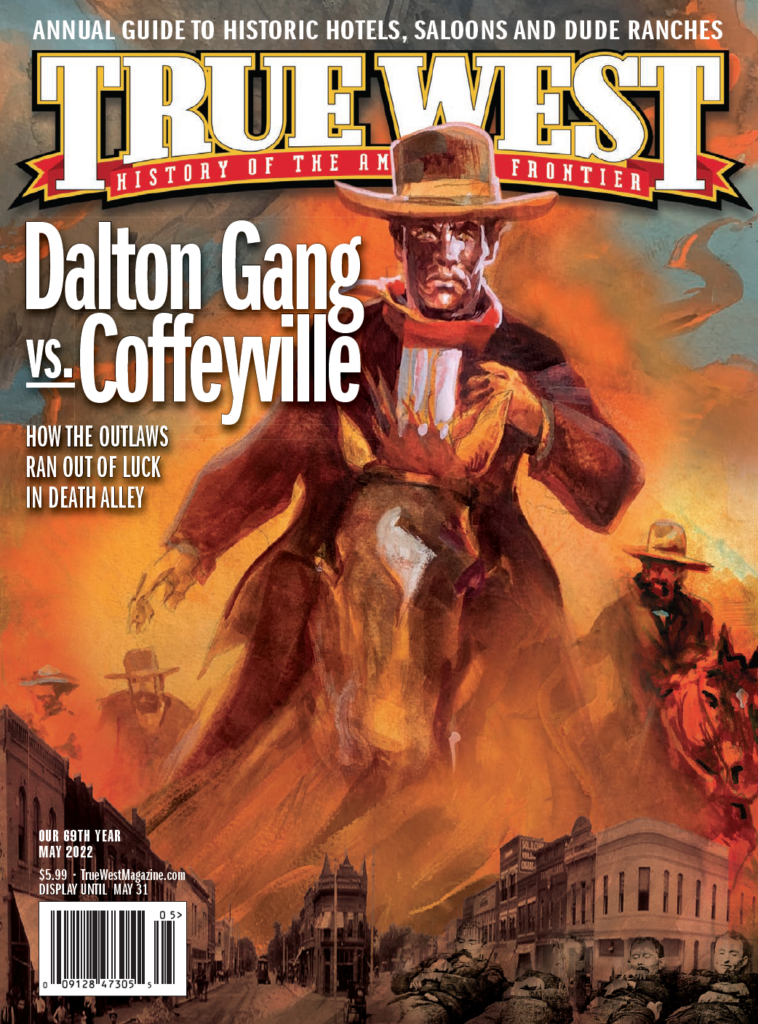Billy Wilson and Tom Pickett escaped the noose for the senseless murders of four Hispanos in Lincoln County.
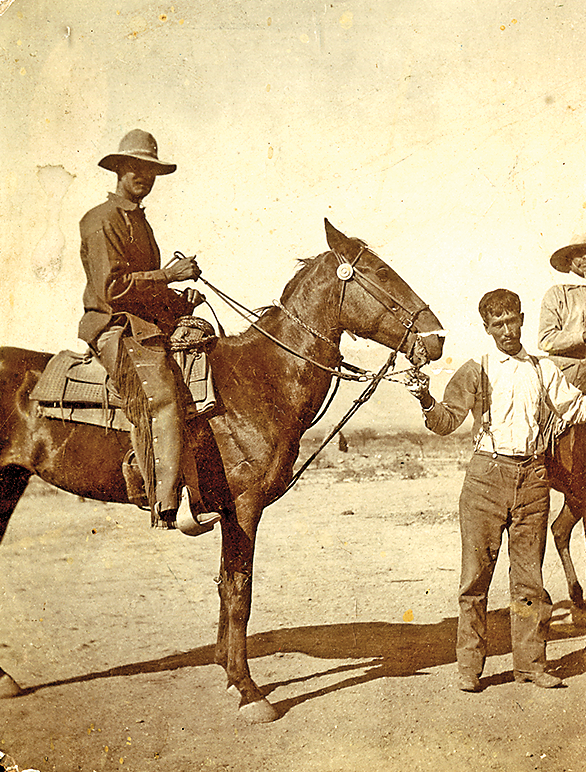
“Where would we get help if it weren’t for the Mexicans!” These were the words Billy “The Kid” Bonney said to Billy Wilson, Tom Pickett, Charlie Bowdre, Tom Folliard and Dave Rudabaugh when they were being pursued by Lincoln County Sheriff-elect Pat Garrett’s posse in the winter of 1880. After Tom Folliard and Charlie Bowdre were shot and killed, the Kid and his remaining associates were taken into custody by Garrett and his posse at Stinking Spring on December 23, 1880. Pickett faced charges for rustling in Las Vegas while Bonney, Wilson and Rudabaugh were escorted to Santa Fe.
Tom Pickett was released on bonds and skinned out. Billy Wilson was convicted of counterfeiting and sentenced to seven years’ imprisonment. Dave Rudabaugh was convicted for the murder of jailer Antonio Lino Valdez and sentenced to death. William Bonney was sentenced to hang before famously escaping jail in Lincoln and being shot down by Pat Garrett in Fort Sumner on July 14, 1881. Dave Rudabaugh and Billy Wilson also escaped jail less than a year after their convictions, albeit in a less spectacular fashion. AlthoughRudabaugh fled the Territory, never to be seen again, Tom Pickett and Billy Wilson showed up again in Lincoln County with grievous consequences.
While their old rustling companion William Bonney remained a heroic figure among much of the Hispano populace in eastern New Mexico Territory, Billy Wilson and Tom Pickett demonstrated an egregious lack of affinity for la gente (the people) when briefly becoming a headline story themselves after participating in a shameful quadruple murder on Tuesday, January 8, 1884. “MEXICANS MASSACERED,” the Las Vegas Gazette announced two days later. It was an appropriate headline, with the newspaper accurately describing the incident as “one of the most revolting chapters in the history of New Mexico bloodshed.”
When a contingent of Hispano laborers building adobe and digging an acequia in the lower Pecos Valley had run out of supplies on January 8, 1884, nine of them set out for Seven Rivers to purchase what they needed to finish their work. The party included Los Ojiotos resident Rigino Gutiérrez, Los Esteritas residents Melquiades Flores and Sisto Gutiérrez, Los Colonias residents Saval and Encarnacion Gutiérrez, along with Tiodoro Ulibarri out of La Cuesa, Juan Lermo from Corpus Christi, Texas, and Puerto de Luna resident Juan Roival, who had assisted Pat Garrett’s posse in the winter of 1880. None of them were armed while peacefully heading toward a small placita (village) in Seven Rivers.
Billy Wilson and Tom Pickett, “former members of Billy the Kid’s notorious gang,” as the Las Vegas Gazette described them, were riding with two rustlers called Pony Williams and Yank Beale. They had spent several days hanging around Bill Griffith’s saloon and draining a large supply of whiskey bottles. Wilson, Pickett and Beale were enjoying some more libations when Pony Williams spotted the nine Hispano laborers approaching outside and stuck his head through the saloon door.
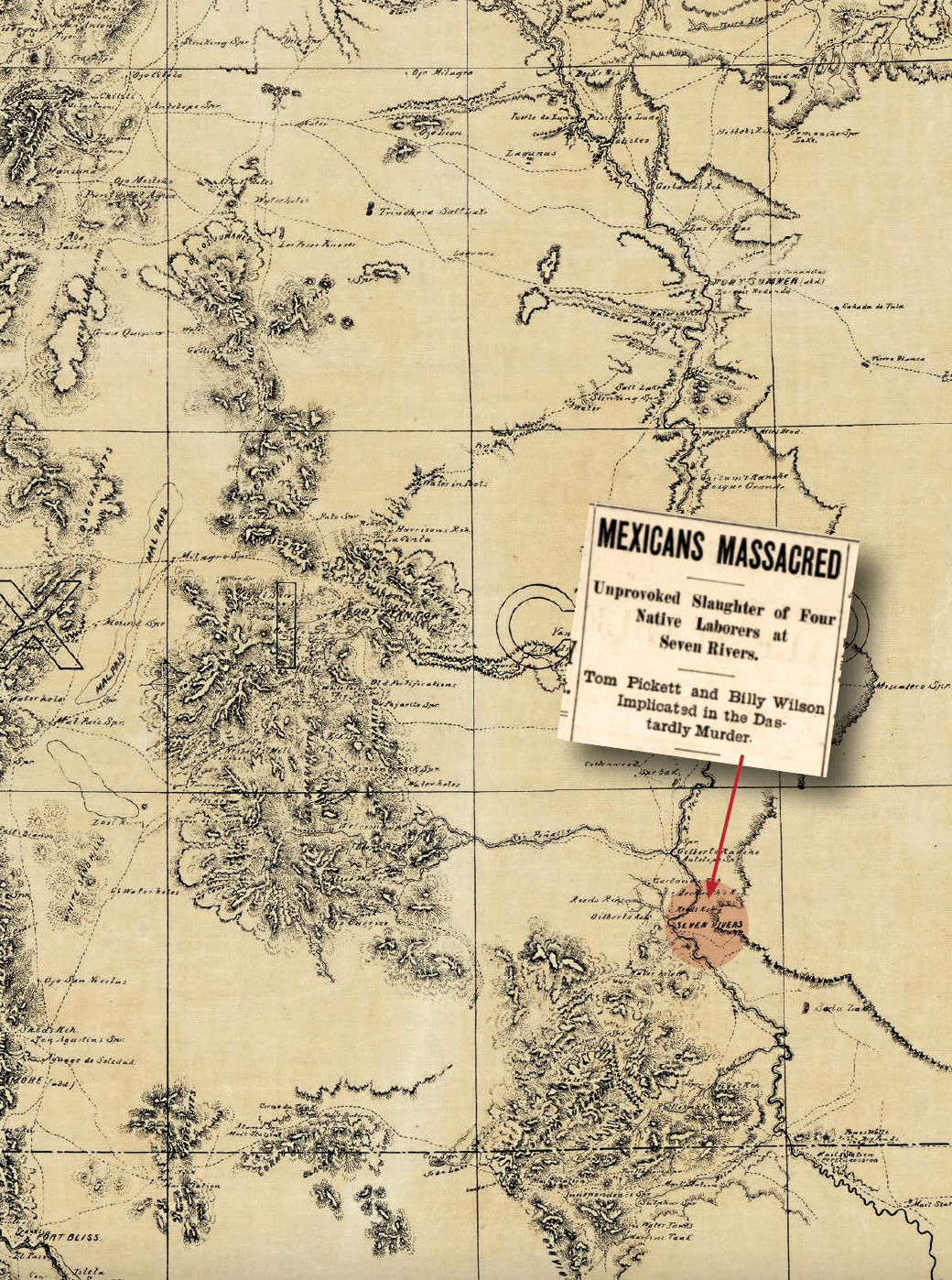
“There’s a gang of greasers coming up the road,” Williams told his companions. “Let’s have some fun with them.”
Billy Wilson, Tom Pickett and the rest of their intoxicated gang quickly ran outside and began readying their Winchester rifles and Colt revolvers. The drunken quartet then charged toward the nine Hispano laborers and opened fire on them. In a hail of unprovoked bullets, Juan Roival shouted at his coworkers to run for it. The unarmed Hispano laborers quickly scattered as Wilson, Pickett and their companions continued firing dozens of shots at them, but only Juan Roival, Rigino Gutiérrez, Saval Gutiérrez, Encarnacion Gutiérrez and another hombre managed to escape with their lives. Sisto Gutiérrez, Tiodoro Ulibarri, Juan Lermo and family man Melquiades Flores lay soaked in their own blood either dead or dying. Two of them had been gunned down instantly while the other two were shot in the back while running for cover.
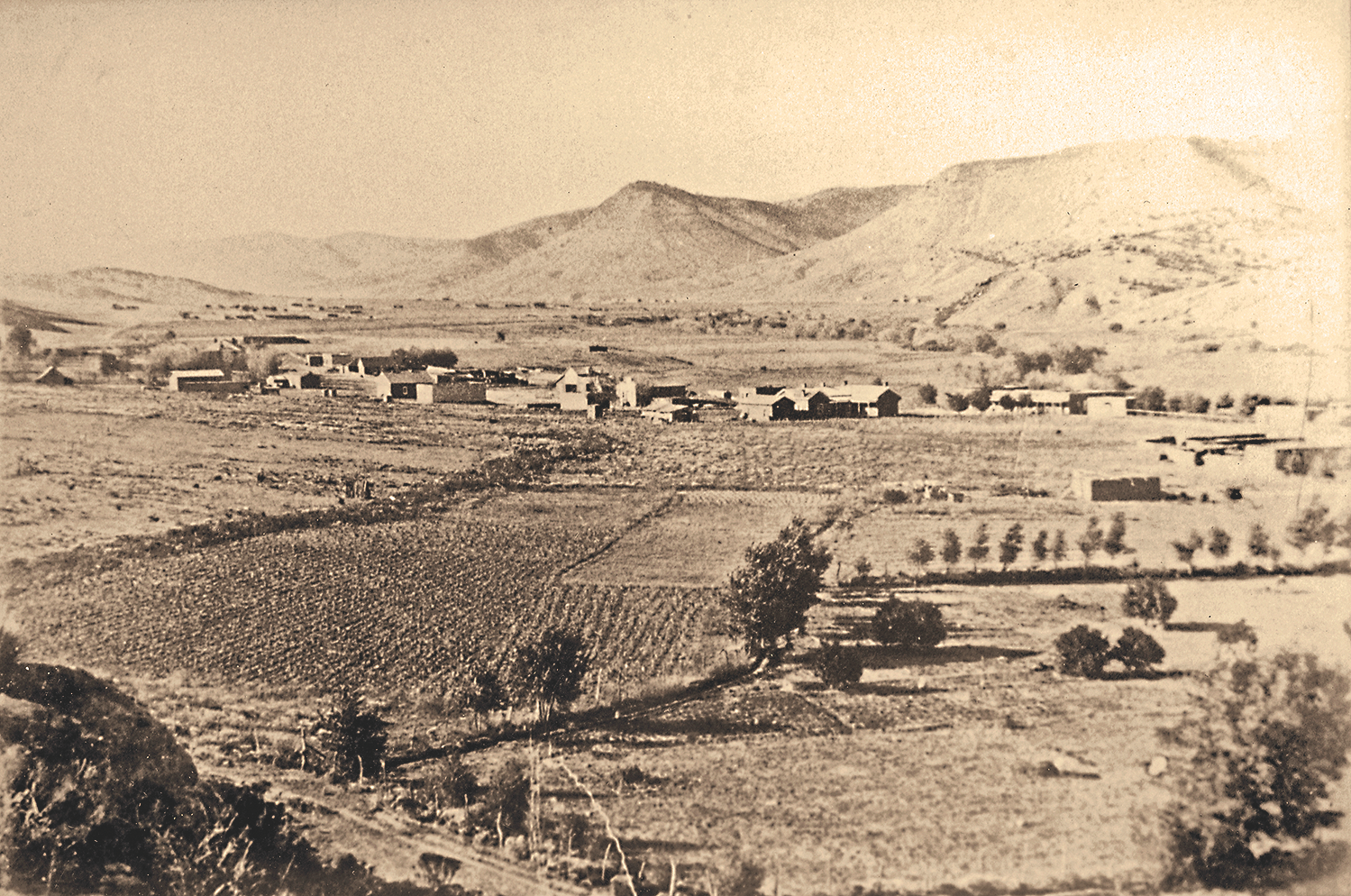
The five surviving Hispanos took shelter behind some adobe walls before fleeing into the mountains and heading north. The whiskey-soaked murderers merrily returned to the Griffith saloon and demanded more drinks. “The howling blood-thirsty rustlers seemed to glory in the slaughter of the four natives, and took their time leaving Seven Rivers,” the Las Vegas Gazette reported. Billy Wilson, Tom Pickett, Pony Williams and Yank Beale then rode south for the Mexican border after “carrying out one of the most blood-curdling crimes ever recorded in frontier history,” as the St. Louis Globe-Democrat described it. Melquiades Flores, Sisto Gutiérrez, Tiodoro Ulibarri and Juan Lermo were buried in a single grave by some of their amigos in La Cuesta (modern-day Villanueva).
Governor Lionel A. Sheldon responded to the slaughter by issuing a public proclamation that was printed in the St. Louis Globe-Democrat on January 15, 1884:
Now, therefore, I do hereby offer a reward of $300 for the capture and conviction of the murderer or murderers of each said murdered parties, to be paid out of the Territorial funds, on proof of capture and conviction of such murderer or murderers.
Done in Executive Chambers, at Santa Fe, January 11, 1884.
[Seal] LINEL A. SHELDON,
Governor of New Mexico
By the Governor.
W.G. Ritch, Secretary.
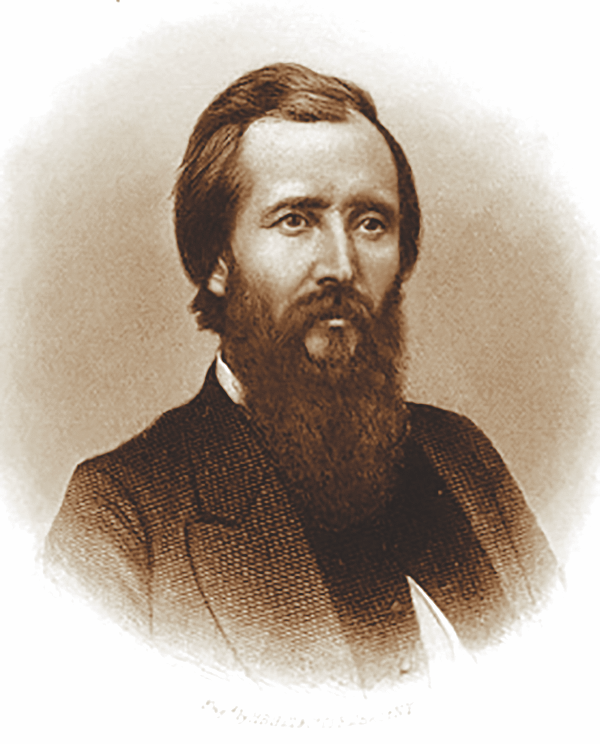
News of the murders was reported by newspapers as far east as Pennsylvania and Connecticut. The Santa Fe New Mexican announced on January 12, 1884, that “the total reward for the capture of the gang is $2,000—which is $500 in the case of each man who fell victims to their cold-blooded ‘fun.’” As far as the Las Vegas Gazette was concerned, Pat Garrett was the man for the job. “It only remains for [Garrett] to go out on the war path again and do up Pickett and Wilson,” the newspaper declared on January 10. It was widely reported that a posse of Lincoln County citizens had pursued Billy Wilson, Tom Pickett, Yank Beale and Pony Williams until they eluded capture by crossing the Rio Grande. “No arrests have been made yet,” reported the Deseret News in Salt Lake City, Utah, on January 19, 1884. “The motive of the killing was pure cowboy deviltry.”
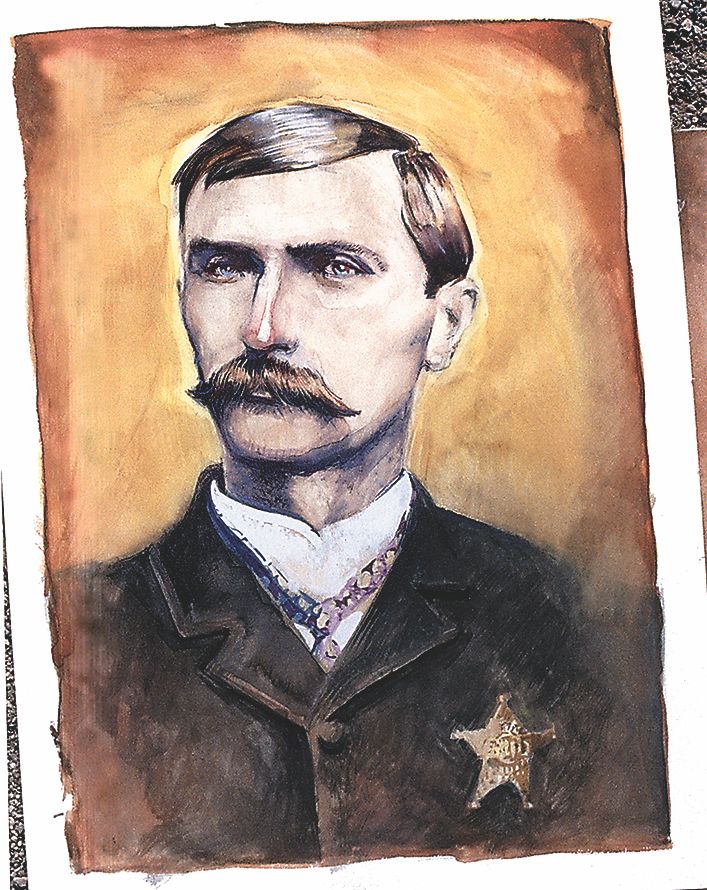
Lincoln County Sheriff John W. Poe was engaging in damage control when writing to Gov. Lionel Sheldon. His letter was soon published in the Lincoln County Leader on February 23, 1884: “I suppose some of the papers have given you the impression that our county is in a terrible condition: overrun with thieves and rustlers again, etc.,” Sheriff Poe wrote. “I assure you that is not the case. Lincoln county is more orderly and peaceably now than it has ever been.” Poe then tried to deny that the murders had even occurred. “Billy Wilson and Tom Pickett have not been in this county for nearly three years. There has not been four men killed in this county in the last eighteen months. I am at a loss to know the motives of parties circulating reports of crime in Lincoln unless they envy the county’s prosperity and peace.”
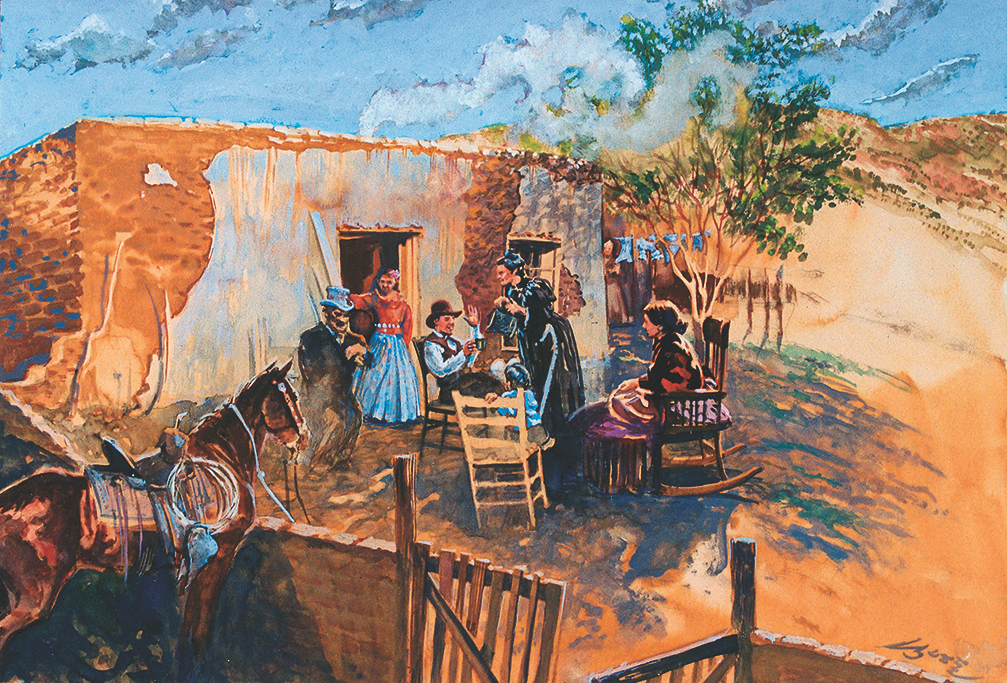
While Lincoln County was enjoying more peaceable days than years prior in 1884, the grisly murders were being swept under the rug.
Billy Wilson, Tom Pickett, Yank Beale and Pony Williams were never captured. Tom Pickett eventually got married and fathered children in Arizona. He worked as a stage-driver and became a deputy U.S. Marshal before exhaling his last final breath in Winslow, Arizona, on May 14, 1934.
Billy Wilson moved to Texas, became known as David L. Anderson, and eventually become the sheriff of Terrell County. Wilson alias Anderson also became friends with Pat Garrett. In 1896 the famed lawman helped broker a pardon for Wilson for counterfeiting when he wrote to New Mexico Territory Governor William T. Thornton:
I have since 1891 known Billy Wilson in Texas as D.L. Anderson, where he has enjoyed the reputation of being a good, honest, and straight forward citizen…I know of nothing he has done which would be discreditable to him since his escape. He is a man of family, all of which command the respect of all the people with whom they come in contact.
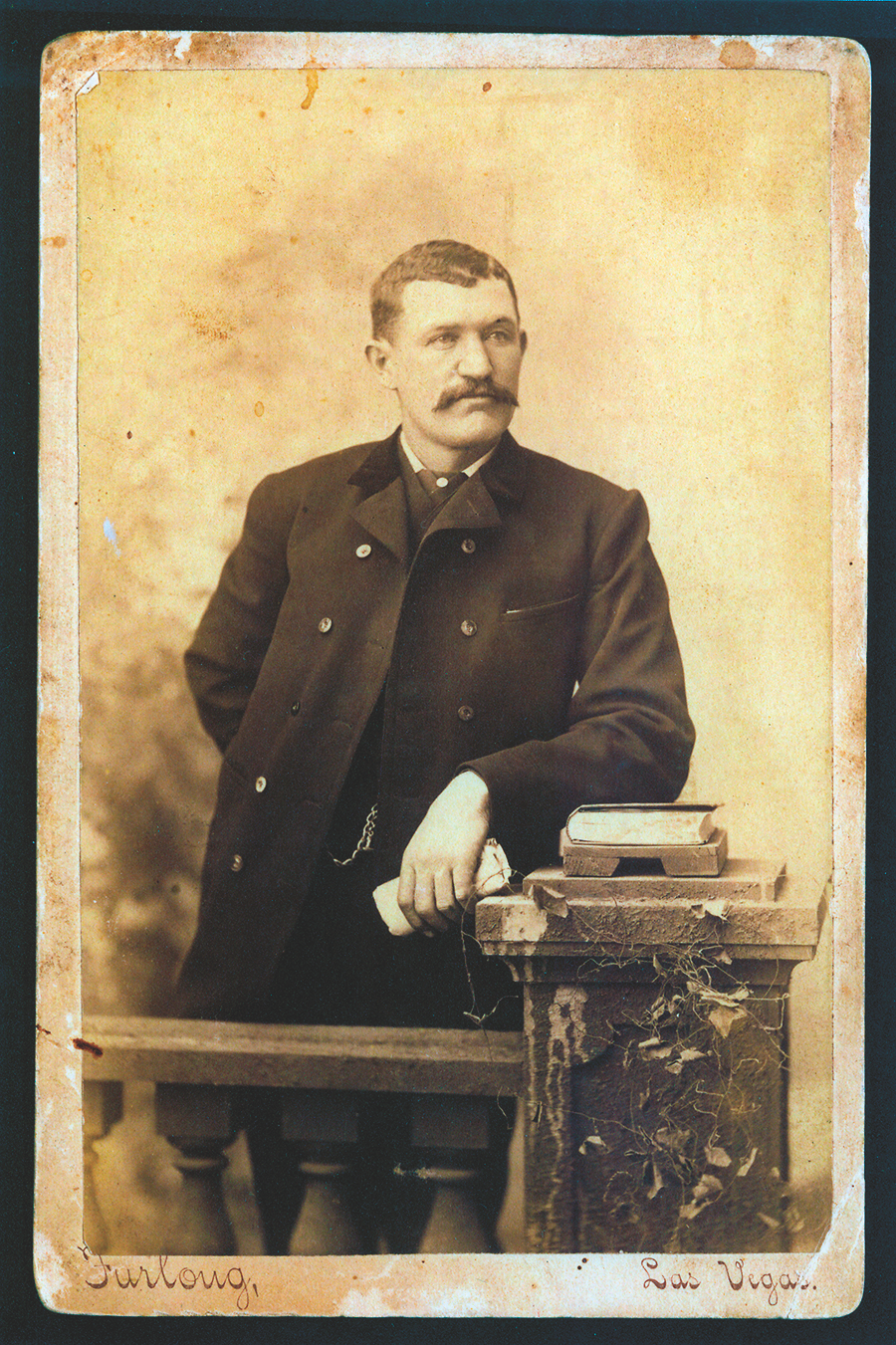
Enjoying the benefits of Pat Garrett’s favor, Billy Wilson never answered for the murders committed in Seven Rivers, and received his pardon for counterfeiting from Governor Thornton. Billy Wilson alias David L. Anderson lived out the rest of his days until death came calling on June 4, 1918, and he was buried in Brackettville, Texas.
“Where would we get help if it weren’t for the Mexicans!” William Bonney’s words to Billy Wilson and Tom Pickett had counted for naught on January 8, 1884, in Seven Rivers. So too had the lives of Melquiades Flores, Sisto Gutiérrez, Tiodoro Ulibarri and Juan Lermo when the Territory’s most famous lawman Pat Garrett helped secure his new pal Billy Wilson a pardon in 1896.
No habría justicia.
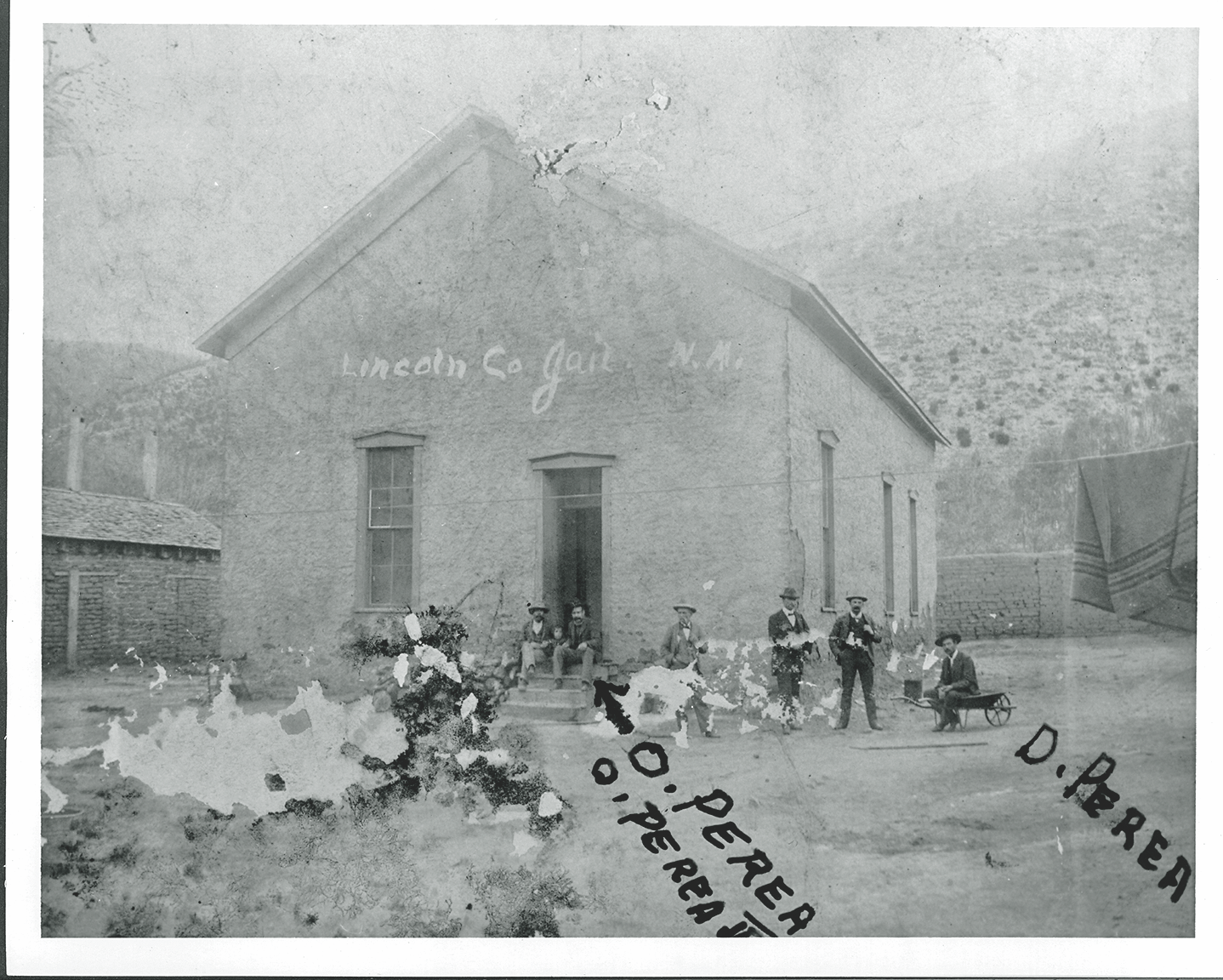
James B. Mills is a historian and published writer. He affectionately dedicates this article to his mother, Diane Mills. He resides in Australia and has spent much of his life researching the American West. His biography, Billy the Kid: El Bandido Simpático, will be published by the University of North Texas Press in 2022.

